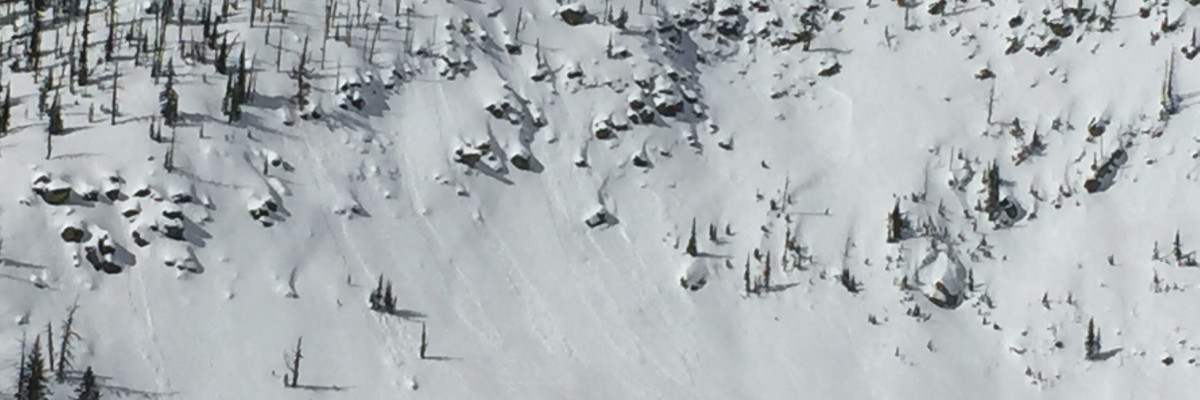The current avalanche danger is MODERATE for the west central Montana backcountry. Human triggered avalanches are possible in specific terrain. Conditions will change quickly today as water is added to the snowpack and could easily jump to considerable by early afternoon. Continual evaluation of the avalanche conditions will be essential for recreating in the backcountry today.
Good morning, this is Logan King with the West Central Montana Avalanche Center’s avalanche advisory for Thursday, February 16, 2017. This danger rating does not apply to operating ski areas, expires at midnight tonight and is the sole responsibility of the U.S. Forest Service.
Weather and Snowpack
The high pressure system that has dominated the region early this week is deteriorating and overnight precipitation has started. So far this morning .1-.5 inches of SWE have been added to the snowpack and looks to be rain and not snow to at least 7,500ft. Mountain temperatures this morning are well above freezing in the upper 30’s to low 40’s. Ridge top winds are from the SW at 18mph gusting to 33mph at Point 6 and 16mph gusting to 31mph from the SSE at Deer Mountain.
Yesterday Tim and I toured in the Rattlesnake and we found the near surface facets continue to fail and propagate in extended column tests and propagation saw tests. The near surface facets are healing but are still reactive under the right conditions in isolated areas. Take the time to dig and see if the near surface facets are present and reactive before committing to a slope. Carefully evaluate not just the likelihood but also the consequences of getting caught in a persistent slab avalanche as there is a sizable amount of snow in the slab on top of the near surface facets.
The secondary concerns this morning will be wind slabs and loose wet slides. Wind slabs have had some time to settle but are still a concern at higher elevations and in steeper terrain. Look for signs of wind loading and stay aware of conditions as they change today. Loose wet avalanches will also be a concern today, although they are small stay aware of terrain traps that will increase the consequences of getting caught up in a small loose wet slide.
With rain overnight and more expected today the potential for wet slab avalanches will develop by mid-day today. Models suggest that nearly an inch of rain is expected for the Bitterroot Range. Rain on snow events rapidly change avalanche conditions and wet slabs are very difficult to predict, so if you are seeing significant rain on snow conservative decision making will be critical in the mountains today.
Avalanche and Weather Outlook
As the high pressure system is replaced by tropical moisture, precipitation will continue to develop across the region. Rain is expected to persist through the day today and will shift to snow tonight as the temperature starts to drop. Rain on snow can rapidly increase avalanche danger so keep an eye on how much and what type of precipitation is falling.
If you are out in the backcountry, please send us your observations, these are very helpful in producing the advisory. I will issue the next regular advisory on February 18, 2017.
Ski and ride safe.














